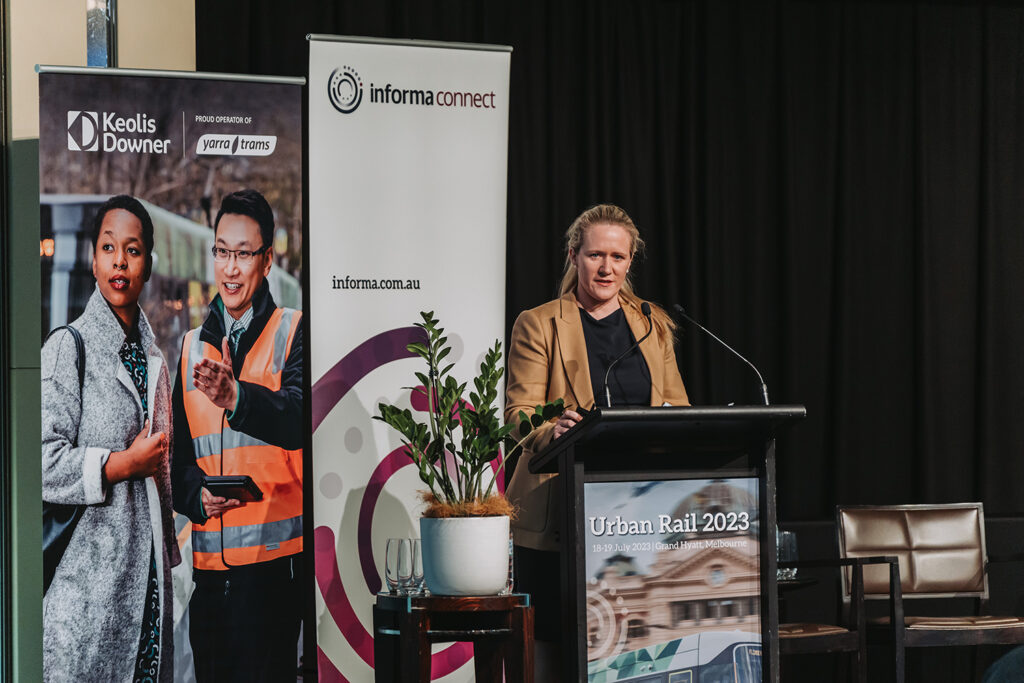Melbourne’s tram network, Yarra Trams, is the largest in the world with more than 250 kilometres of double track and a fleet of around 500 vehicles.
Operated by Keolis Downer – a joint venture between international transport operator Keolis and Australian infrastructure giant Downer – it employs roughly 2,600 people, including 1,200 drivers. Delivering up to 5,000 services a day, the network caters for upwards of 200 million passenger trips in a normal year.
Although most of the light rail network was laid out more than 80 years ago, Melbourne has expanded around it, meaning hundreds of thousands of Melburnians now live within a short walk of a tram stop.
The network is not only a vital transport service throughout Victoria’s capital, but an iconic part of the city’s cultural fabric. Having operated for more than 100 years, Melbourne’s trams have earned a level of trust and affection that is matched by few public transport operations around the world.
Overcoming network challenges
But despite all the Melbourne tram network has to celebrate and be proud of, it also has its fair share of challenges, explains Carla Purcell, Chief Executive Officer of Keolis Downer Yarra Trams.
“There’s no doubt that operating a network that is more than a century old throws up a range of challenges. Especially as we strive to deliver a service that surpasses the expectations of the modern travelling public,” Ms Purcell said ahead of the Urban Rail Conference.
Having to share three quarters of its network with motorists and other road users, is one of the primary challenges Melbourne’s tram network has to deal with.
“This is a much higher proportion than comparable light rail services around the world. It is also a key reason why we see an average of three vehicle-to-tram collisions a day on the network, causing disruptions and delays for passengers,” Ms Purcell said.
These collisions come despite recent efforts and innovations to increase separation between vehicles and trams in key transport corridors through the centre of Melbourne.
Maintenance and renewal of a network and a tram fleet this large can also be difficult. Its large fleet of vehicles includes multiple tram classes, including the iconic W-class tram introduced around a century ago that services the City Circle line.
To stay on top, the organisation has had to develop world-class expertise in maintaining and refurbishing its fleet. Alongside this, it has worked with the Victorian Government to introduce the modern E-class onto the network.
Meanwhile, its long-running track refurbishment program ensures kilometres of track and overhead cabling is repaired or replaced annually to ensure the network runs smoothly. Since 2009 it has replaced more than 100km of track – more than a third of the network.
Continuous innovation
Ms Purcell says this attention to detail is seen in other pockets of the operation too.
“We’re always looking to innovate and continuously improve so we can provide a world-class public transport service for Melbourne’s passengers. Beyond trialling and introducing cutting-edge technologies and hardware onto our network, we’ve worked to better understand passenger movement data and adapt our services to new passenger habits.”
“We are also working hard to make our operation more environmentally sustainable in partnership with the Victorian Government, significantly cutting our operational emissions so we can do our bit to tackle climate change.”
The organisation also takes measures to improve accessibility and inclusion, recently partnering with the AFL for a Try Before You Ride Day. This initiative offers support to people with mobility challenges, enabling them to practice tram usage in a safe and controlled environment, so they can gain confidence using the services.
“An effective public transport system is key to ensuring people have access to essential services, particularly for those who don’t have a car, who can’t drive or who might just be daunted at having to navigate a car through the city’s streets. We see these measures as vitally important,” Ms Purcell said.
Serving the community
On top of this, the organisation is helping people to feel safe and included in the community, where they may have previously felt unsafe and excluded. Every year during the Midsumma Pride March, its employees proudly walk beside its #AllAboard Pride Tram – a moving artwork celebrating love and diversity.
“On top of being fabulous, the #AllAboard tram is a bold statement that everyone is welcome on Melbourne’s tram network, and that we unequivocally and unapologetically support our city being an open and inclusive community.”
Ms Purcell is also proud of Keolis Downer’s support for dozens of charities and not-for-profits over the last few years, particularly its Community Partnerships Program.
“The Community Partnerships Program gives free advertising wraps on our trams to organisations that are building a more sustainable and resilient Melbourne. These are essentially giant moving billboards.”
“We are not simply in the business of getting people from one place to another. Our business is connecting people, with each other, with their city and with their community.”
Carla Purcell is Chief Executive of Yarra Trams, where she formerly held the role of Chief Operating Officer. Prior to joining Keolis Downer Yarra Trams, Carla was a senior executive at Qantas and a lawyer at a major law firm.
Join Ms Purcell at this year’s Urban Rail Conference on 18-19 July, proudly sponsored by Yarra Trams, where she will give further insight into her strategy.
Following Urban Rail, Ms Purcell will next join us at Connect Rail on 5-6 September 2023 at the Melbourne Convention & Exhibition Centre.
